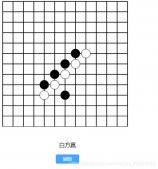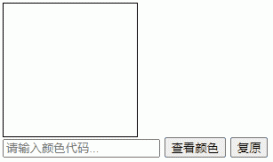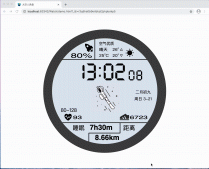本文實(shí)例為大家分享了js canvas隨機(jī)粒子特效的具體代碼,供大家參考,具體內(nèi)容如下
前言
canvas實(shí)現(xiàn)前端的特效美術(shù)
結(jié)果展示

代碼
html
|
1
2
3
4
5
6
7
8
9
10
11
12
|
<!DOCTYPE html><html lang="en"><head> <meta charset="UTF-8"> <meta http-equiv="X-UA-Compatible" content="IE=edge"> <meta name="viewport" content="width=device-width, initial-scale=1.0"> <title>Document</title></head><body> <script src="./main.js"></script></body></html> |
main.js
|
1
2
3
4
5
6
7
8
9
10
11
12
13
14
15
16
17
18
19
20
21
22
23
24
25
26
27
28
29
30
31
32
33
34
35
36
37
38
39
40
41
42
43
44
45
46
47
48
49
50
51
52
53
54
55
56
57
58
59
60
61
62
63
64
65
66
67
68
69
70
71
72
73
74
75
76
77
78
79
80
81
82
83
84
85
86
87
88
89
90
91
92
93
94
95
96
97
98
99
100
101
102
103
104
105
106
107
108
109
110
111
112
113
114
115
116
117
118
119
120
121
122
123
124
125
126
127
128
129
130
131
132
133
134
135
136
137
138
139
140
141
142
143
144
145
146
147
148
149
150
151
|
/* *粒子化類構(gòu)造 *類功能: *1.初始化。創(chuàng)建畫布,規(guī)定粒子屬性等; *2.創(chuàng)建圖像并且進(jìn)行繪制 *3.區(qū)域顏色定義 *4.粒子移動(dòng)和偏射角度*/// 生成粒子let Particle = function(context, options){ let random = Math.random(); this.context = context; // 在畫布里的x坐標(biāo) this.x = options.x; // 在畫布里的y坐標(biāo) this.y = options.y; // 取隨機(jī)數(shù)的1/2,對(duì)角度進(jìn)行隨機(jī)放大 this.s = 0.5 + Math.random(); // this.s = 1 + Math.random(); // 粒子運(yùn)動(dòng)的變化角度 this.a = 0; // 寬度 this.w = window.innerWidth; // 高度 this.h = window.innerHeight; // 半徑 this.radius = options.radius || 0.5 + Math.random() * 10; // 顏色 this.color = options.color || "#E5483F"; // console.log(this.color); // 指定3秒后調(diào)用; // 如果粒子的半徑大于0.5,加入新的粒子。 setTimeout(function(){ if(this.radius > 0.5){ particles.push( new Particle(context, { x: this.x, y: this.y, color: this.radius / 2 > 1 ? "#d6433b" : "#FFFFFF", radius: this.radius / 2.2 }) ); } }.call(Particle), 3000);};// 渲染圖像Particle.prototype.render = function() { //從(0,0)開(kāi)始新的路徑; this.context.beginPath(); // 創(chuàng)建曲線弧 this.context.arc(this.x, this.y, this.radius, 0, 2 * Math.PI); // 繪圖的線條寬度 this.context.lineWidth = 2; //顏色填充 this.context.fillStyle = this.color; // 填充當(dāng)前圖像的路徑 this.context.fill(); // 返回初始點(diǎn),并且繪制線條到初始位置 this.context.closePath();};Particle.prototype.swapColor = function() { // 排除白色 if (this.color != "#FFFFFF") { // 判斷左右界面,并且賦顏色的值 if (this.x < this.w / 2) { // 左半邊 this.color = "#36fcfa"; } else { // 右半邊 this.color = "#E5483F"; } } };Particle.prototype.move = function() { // 顏色定義 this.swapColor(); // 橫坐標(biāo)按照cos角度進(jìn)行變換,并且對(duì)其進(jìn)行隨機(jī)數(shù)放大; // 偏射角度以便兩個(gè)半界分開(kāi) this.x += Math.cos(this.a) * this.s; this.y += Math.sin(this.a) * this.s; // this.y += Math.cos(this.a) * this.s; // this.x += Math.sin(this.a) * this.s; // 在變化后,對(duì)隨機(jī)角度進(jìn)行再重取; this.a += Math.random() * 0.8 - 0.4; // 判斷全為0,粒子橫坐標(biāo)無(wú)移動(dòng); if (this.x < 0 || this.x > this.w - this.radius) { return false; } // 粒子縱坐標(biāo)無(wú)移動(dòng); if (this.y < 0 || this.y > this.h - this.radius) { return false; } // 重新繪制圖像 this.render(); return true; };let canvas = document.createElement('canvas');canvas.width = window.innerWidth - 20;canvas.height = window.innerHeight - 30;document.body.insertBefore(canvas, null);let context = canvas.getContext('2d');const conf = { frequency: 50, x: canvas.width, y: canvas.height};let particles = [], frequency = conf.frequency;setInterval(function(){ popolate();}.bind(null), frequency);function popolate(){ particles.push( new Particle(context, { x: conf.x / 2, y: conf.y / 2 }) ); return particles.length;}function clear() { context.globalAlpha = 0.04; context.fillStyle = '#000042'; context.fillRect(0,0,canvas.width, canvas.height); context.globalAlpha = 1;}function update(){ particles = particles.filter(p => p.move()); clear(); requestAnimationFrame(arguments.callee);}update(); |
以上就是本文的全部?jī)?nèi)容,希望對(duì)大家的學(xué)習(xí)有所幫助,也希望大家多多支持服務(wù)器之家。
原文鏈接:https://blog.csdn.net/u013362192/article/details/115222568


















